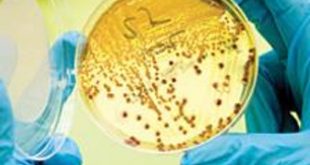The convergence of biology and robotics has given rise to a new generation of machines that blur the line between organism and device. Insect robotics—once confined to speculative fiction—has matured into a serious field with profound implications for surveillance, agriculture, disaster response, and even medical innovation. By co-opting the highly efficient designs of insects, refined through over 400 million years of evolution, researchers are now creating hybrid systems that outperform traditional machines in mobility, adaptability, and energy efficiency. This revolution spans three categories: cyborg insects, biohybrid carriers, and insect-inspired robots, each opening new frontiers of possibility.
Why Insects? Nature’s Optimization Blueprint
Insects represent an unparalleled model of evolutionary efficiency. Their compact design, low energy consumption, and incredible resilience make them ideal platforms for robotics. For instance, a honeybee can travel over 500 miles on just a teaspoon of nectar—far beyond the reach of any battery-powered drone. Beetles endure extreme desert temperatures, while dragonflies maneuver effortlessly through turbulent air. Insects also possess unparalleled mobility, navigating confined spaces that remain inaccessible to even the smallest unmanned aerial vehicles.
Building on these evolutionary strengths, DARPA’s 2006 HI-MEMS (Hybrid Insect Micro-Electro-Mechanical Systems) program introduced a radical idea: implant electronic components into insects during metamorphosis. As the insect’s body develops, the foreign electronics are integrated seamlessly into neural and muscular systems, enabling remote control with remarkable precision. While early iterations relied on crude electrodes, current models utilize optogenetics—introducing light-sensitive proteins into neurons—to allow for highly localized, non-invasive control. Combined with onboard energy-harvesting systems, these advances now enable missions that are longer, more targeted, and less intrusive.
For various reasons, hijacking insects’ bodies may be a reasonable solution to the problems inherent in creating miniature drones for various applications. First, insects are naturally self-powered. This means that HI-MEMS can operate for longer periods of time than their mechanical counterparts and do not always need to be controlled. “Hybrid insect” drones would be created using live insects, electronic circuitry, and other technologies. These HI-MEMS could then be equipped with sensors to conduct military and civilian missions
Generations of Insect Robotics: From Biological Platforms to Fully Engineered Machines
Cyborg insects have a number of disadvantages compared to actual robots, such as limited life spans. The advantage is that they have ready-made platforms, avoiding the necessity of making a lot of small parts. They also use less power than comparable robots. One big advantage is that the insect cyborg can overcome obstructions by itself.
Breakthrough Applications Across Sectors
In precision agriculture, biohybrid systems like bee backpacks are revolutionizing field monitoring. These sensor-equipped pollinators collect granular data on humidity, temperature, and bloom cycles, enabling precision spraying that has reduced pesticide usage by 70% in controlled trials. Meanwhile, RoboFly soil scouts are being designed to burrow beneath crops and analyze subsurface nutrient levels, predicting crop yields with up to 95% accuracy. In California almond farms, thermal-sensor-equipped bees have already identified irrigation leaks, saving an estimated 25% in water usage.
Disaster response is another high-impact area. Cyborg cockroaches—fitted with neural stimulation systems and CO₂ sensors—were deployed in Japan’s 2023 earthquake simulation trials to locate survivors beneath rubble. Their ability to maneuver through cracks and debris provides a crucial edge over mechanical search-and-rescue robots. Similarly, DragonflEye dragonflies equipped with infrared cameras have been flown into forest fires to identify and map hotspot zones, transmitting real-time data to firefighters on the ground.
MIlitary Applications
These insect drones may have many military applications, one of which is to spy on enemies. Small live camera-carrying could fly undetected into locations where humans could not go. These little inconspicuous insects are able to track enemies behind them and provide intelligence data.
In military and surveillance operations, cyborg beetles have been discreetly deployed in conflict zones like Ukraine to gather intelligence. Equipped with microphones and motion sensors, these biohybrids are nearly impossible to detect and capable of navigating confined or urban terrain.
Other applications of these insects may be for the spread of biological and chemical agents in the territory of the enemy. Or, for example, to attack certain enemy equipment, for example, breakdowns of their radio stations, damage to their wires and networks. Meanwhile, moths outfitted with chemosensors are being used to detect airborne traces of chemical weapons. These insect-based systems offer sensitivity levels 10 times greater than the most advanced handheld detectors currently used by armed forces.
Core Technical Innovations Propelling the Field
Ethical and Regulatory Challenges in an Uncharted Domain
Despite rapid technical progress, ethical and regulatory questions are becoming increasingly urgent. The typical lifespan of cyborg insects is reduced by 40–50% post-implantation, and behavioral studies suggest potential distress—such as grooming or rejection behaviors—in response to neural implants. A 2022 survey of biologists found that 63% were concerned about animal welfare issues in cyborg development.
More concerning is the complete lack of international regulation. Unlike drones or genetically modified organisms, cyborg insects fall into a grey zone of legal oversight. If lab-bred specimens escape into the wild, they may disrupt ecosystems or inadvertently introduce artificial genes. As the line between tool and living organism blurs, societies must determine acceptable boundaries and oversight mechanisms for their deployment.
Conclusion: Insect Robotics as a Platform for the Post-Silicon World
Insect robotics is no longer a theoretical curiosity—it is a functioning, field-tested technology reshaping industries from agriculture to defense. These systems offer unmatched efficiency, stealth, and adaptability, presenting solutions to problems mechanical engineering alone cannot solve. The potential is staggering. By 2035, bees may autonomously pollinate 30% of global crops while doubling as environmental sensors. Swarms of cyborg insects could save thousands of lives annually in disaster zones. Water-walking robots might collect a million tons of ocean plastic by 2040.
As we transition into a world increasingly driven by biology as a technology platform, insect robotics offers a compelling vision of how life and machine can merge to serve both humanity and the planet. The future is six-legged, solar-powered, and ready to fly.
References and Resources also include:
http://www.draper.com/news/equipping-insects-special-service
https://spectrum.ieee.org/automaton/robotics/industrial-robots/draper-dragonfleye-project
https://www.sciencedaily.com/releases/2018/12/181212134435.htm
 International Defense Security & Technology Your trusted Source for News, Research and Analysis
International Defense Security & Technology Your trusted Source for News, Research and Analysis

